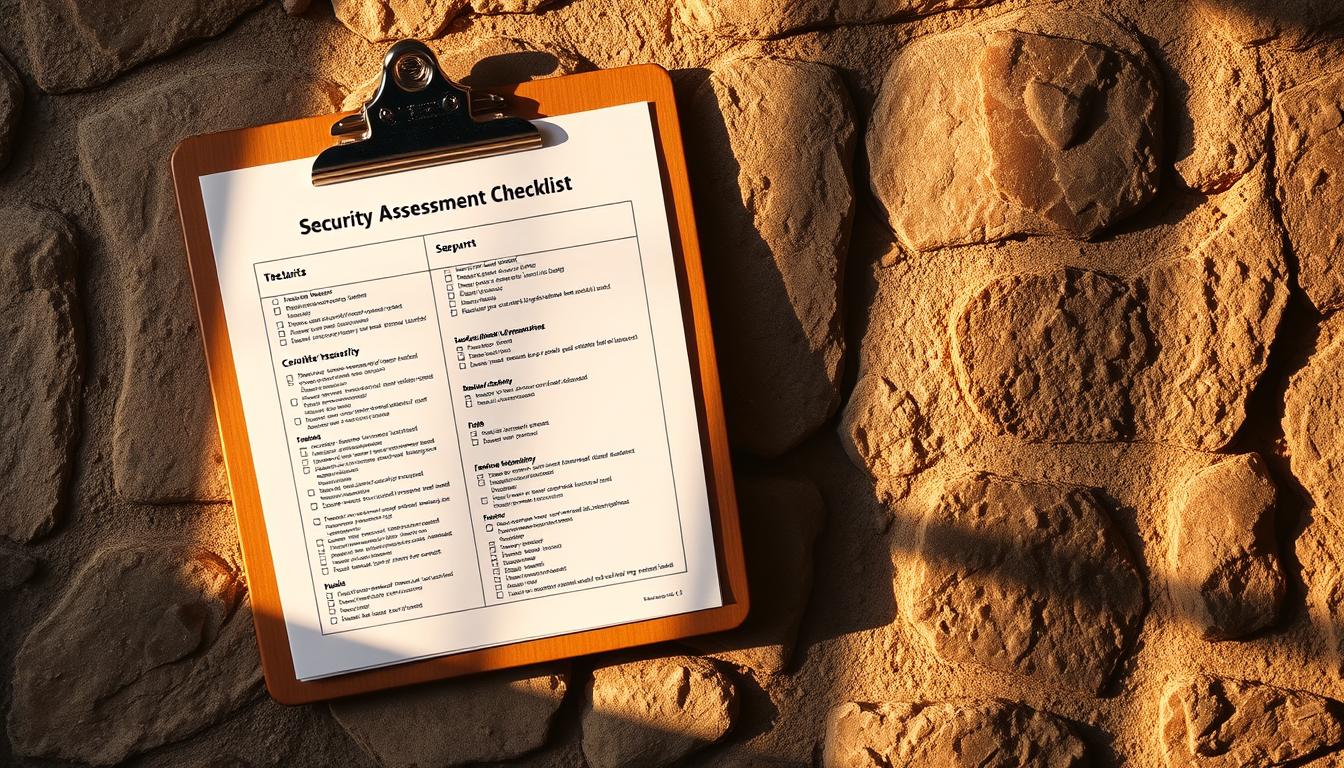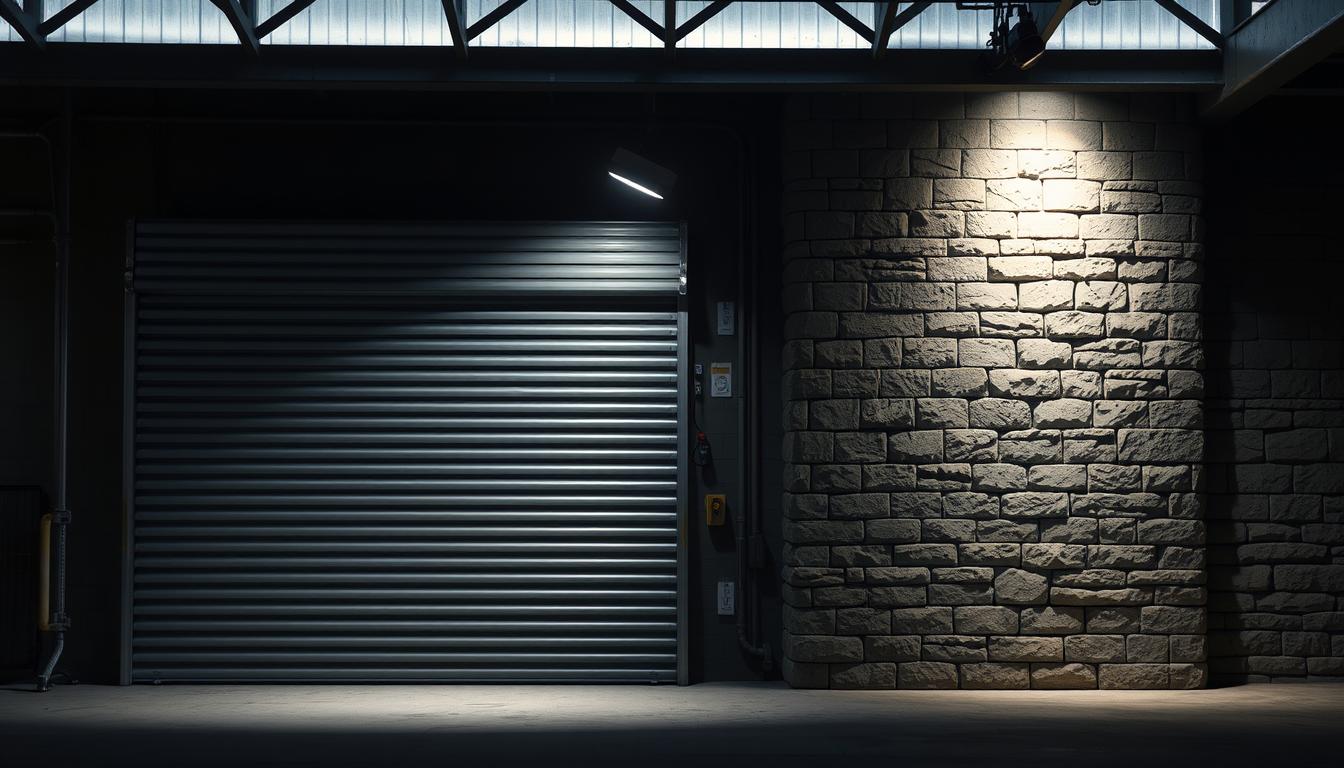When it comes to securing your home, choosing the right barrier matters. For Aussie homeowners, two popular options often come up: modern entry systems and traditional structures. But which one truly stands up to the test?
Modern entry systems provide convenience and tech-driven safety, while traditional barriers rely on natural strength. Each has unique perks and challenges. Factors like material quality, garage door installation methods, and climate resilience play a big role in their effectiveness, especially when considering items like garage doors and external walls.
This guide breaks down real-world examples from Australian properties. You’ll learn how upgrades like reinforced panels or weatherproofing boost security. We’ll also share maintenance tips to keep your choice reliable for years, including insights on the best materials such as sheet metal for durability.
Key Takeaways
- Modern systems often include smart tech for real-time monitoring.
- Traditional barriers excel in resisting harsh weather conditions.
- Material choice impacts both durability and maintenance needs, including soft side and hard side options.
- Local climate plays a role in long-term performance.
- Expert insights help balance cost and security.
Introduction to Property Protection in Australia
Australian properties face twin threats: opportunistic intruders and Mother Nature’s fury. From cyclones battering the north to scorching heatwaves in the south, building bases need to withstand more than just forced entry. Did you know a poorly secured tool cupboard can become a burglar’s toolkit?
Overview of Security Challenges
Break-ins spike during holiday seasons, with 40% occurring through ground-floor access points. Meanwhile, hailstorms and bushfires test materials yearly. A neighbour’s flimsy storage shed once became airborne during a storm – crashing into their main structure.
Importance of Choosing the Right Protection
Smart bases start with weatherproof airlocks and reinforced entry points. While some swear by classic stone barriers, others prefer modern solutions with impact-resistant panels, such as garage doors. It’s like choosing between a trusty akubra hat or high-tech sunscreen – both shield you, but in different ways.
Local tradies often share stories of retrofitted homes surviving cyclones thanks to upgraded foundations. Your choice affects not just security, but insurance premiums and resale value. What works for a Queenslander house might fail in Tasmania’s frosty winters.
Understanding Garage Doors as a Security Feature
Choosing the right entry points for your home can make all the difference in keeping your family safe. Modern security solutions offer various options, but how do you know which one fits your needs? Let’s explore the different styles and upgrades that boost protection while standing up to Australia’s tough climate.
Material Choices for Lasting Performance
Entry systems come in three main materials. Wood adds warmth but requires frequent sealing to combat humidity. Metal options resist dents and corrosion, perfect for coastal areas. Sheet metal variants offer industrial-grade strength, often used in bushfire-prone regions.
Smart Upgrades for Enhanced Safety
Swapping traditional locks for code-based systems prevents lock-picking attempts. Installers recommend positioning the hard side outward to deflect blunt force. A Brisbane family recently stopped a break-in by adding steel reinforcement bars to the lower part of their structure.
Regular checks matter. Lubricate hinges every six months and test auto-reverse functions monthly. One Sydney homeowner avoided a collapse by spotting rust on the side hinges during routine maintenance. Simple habits like these keep your barrier reliable year-round.
Overview of Stone Walls and Their Protective Qualities
Sturdy barriers have long been a cornerstone of Australian home security. Natural materials like stone bring unmatched ruggedness, but they’re not without quirks. Let’s explore why these structures remain popular despite their upkeep demands.
Strength and Durability of Stone Walls
Built correctly, these barriers laugh at harsh weather. A heritage-listed home in Tasmania still sports its original base structure after 150 years – surviving bushfires and flash floods. The secret? Quality craftsmanship and dense materials that resist rot and pests.
Modern builders often use interlocking designs for extra stability. Unlike timber or metal, stone won’t warp in heat or rust near salt air. One Gold Coast property avoided cyclone damage thanks to its 600mm-thick barrier acting as a windbreak.
Potential Limitations and Maintenance Needs
Even rock-solid defences need care. Erosion can create weak spots, especially on the soft side facing prevailing winds. A Queensland family learned this the hard way when their poorly angled wall let stormwater undermine its base.
Regular checks prevent small issues becoming disasters. Schedule annual mortar repointing and clear vegetation near the access points. Smart homeowners use gravel trenches to redirect water flow – a trick that saved a Blue Mountains property from landslide damage last winter.
Garage Door vs Stone Wall: A Comparative Analysis
Home security decisions often boil down to balancing modern convenience with time-tested strength. Let’s cut through the noise and see how these two popular options stack up in real-world scenarios.
Key Differences in Protection Levels
Tech-driven systems shine in active threat prevention. A Brisbane family recently stopped intruders using motion-sensor lights synced to their garage door app. These setups allow remote monitoring – handy when you’re miles from home. But what happens during a blackout? That’s where traditional walls hold their ground.
Natural stone barriers need no electricity to work. Their sheer mass deters forced entry attempts – a Sydney homeowner watched security footage of would-be thieves giving up after five minutes of trying to scale their 2m-high structure. Yet maintenance matters: poorly maintained mortar joints can become weak spots over time.
- Installation complexity: Modern systems require garage door service professional setup, while stonework demands skilled stonemasons
- Climate response: Coastal homes benefit from rust-resistant garage door materials, whereas inland properties might prioritise fire-resistant stone
- Budget considerations: Initial costs for quality walls often exceed modern alternatives, but lifetime expenses may balance out
One isn’t inherently better – it’s about matching solutions to your situation. A Melbourne architect recently combined both, using a reinforced door for vehicle access flanked by low stone walls with embedded security lighting. This hybrid approach addresses different threat types while enhancing curb appeal.
Experts suggest starting with your property’s weak points. Urban homes might prioritise smart garage tech to counter theft risks, while rural properties could focus on storm-resistant stonework. Either choice becomes more effective when paired with proper lighting and surveillance as part of a complete security strategy.
Material Choices and Their Impact on Durability
Your home’s first line of defence starts with what it’s made of. The right materials can mean the difference between a structure that lasts decades and one needing constant repairs. Let’s break down three popular options and how they hold up under Australian conditions.
Wood, Metal, and Stone – Pros and Cons
Timber brings natural charm but demands care. A coastal homeowner learned this when their untreated wood frame warped within two wet seasons. Regular sealing helps, but metal often proves tougher. Sheet aluminium variants resist salt spray – perfect for beachside properties.
Steel offers industrial-grade protection. One family’s base structure survived a hailstorm unscathed thanks to reinforced panels. Stone? It’s the marathon runner of materials. A heritage-listed Adelaide home still has its original sandstone base from 1880 – just needs occasional mortar touch-ups.
Maintenance Strategies for Longevity
Smart upkeep starts with knowing your materials. For timber, bi-annual staining prevents rot. Metal sheet cladding needs rust checks after heavy rains. Stone walls thrive with annual weed removal and drainage checks.
A Sydney tradie shares a golden rule: “Inspect joints before storm season.” His tip saved a client’s property when crumbling mortar was spotted early. Simple habits like clearing debris from your base prevent water damage too.
What’s your priority – low upkeep or timeless appeal? A Melbourne couple chose both: composite metal panels with stone veneer. Their hybrid solution cut maintenance by 60% while keeping that rustic look.
Practical How-To Guide for Choosing the Right Security Option
How do you pick the best shield for your castle down under? Start by playing detective with your property. Grab a cuppa and walk around your home – what spots make you think “Hmm, that’s dodgy”?

Your Property’s Security Health Check
Begin with these five steps:
- Map entry routes: Note all ground-level access points, including side gates
- Weatherproof test: Check existing structures for storm damage or wear
- Budget reality check: Compare installation costs vs long-term upkeep
- Tech compatibility: Can your Wi-Fi handle smart systems?
- Local council rules: Some areas restrict wall heights or materials
A Gold Coast family recently used this method. They discovered their seaside home needed salt-resistant materials on the access side facing the ocean. Their solution? A hybrid approach using reinforced panels with decorative stone cladding.
| Factor | Modern Systems | Traditional Barriers |
|---|---|---|
| Weather Resistance | High (coated metals) | Variable (depends on stone type) |
| Upfront Cost | $$ | $$$ |
| Maintenance | Low | Moderate-High |
| Tech Integration | Easy | Limited |
| Access Control | Remote options | Physical barriers only |
Remember, the choosing right option blends practicality with personal needs. Ask yourself: “Does this solution fix my specific weak spots?” A Melbourne homeowner swapped their front wall for a lower design after realising it blocked security lighting – simple changes make big differences.
Pro tips: Use your phone to photograph problem areas during different times. Morning shadows might reveal hidden access points. Still stuck? Many Aussie security firms offer free assessments – worth the call for peace of mind.
Integrating Additional Security Measures
True security isn’t just about barriers – it’s about smart layers that adapt to threats. Even the strongest garage door or stone structure becomes more effective when paired with clever upgrades. Let’s explore how to build a defence system that outsmarts both burglars and bad weather.
Enhancing Entry Point Security with Upgrades
Start with the basics: better locks. A Perth family recently swapped their manual bolts for code-based systems, stopping three attempted break-ins. These digital locks work well with sheet metal reinforcements – installers often sandwich them between layers for hidden strength.
Consider these upgrades:
- Steel crossbars on the interior door frame
- Weatherproof airlocks for cyclone-prone regions
- Vibration sensors that alert phones during raids
One clever choice? Use frosted windows in upper panels. They let light in while hiding valuables from prying eyes. Always position security cameras to cover both the structure and approach paths.
Strengthening Perimeter Defences
Traditional barriers gain new life with modern tricks. A Brisbane homeowner embedded solar-powered lights into their stone safety wall – the sudden glare scared off nighttime intruders. For coastal properties, stainless steel mesh behind stonework prevents erosion while adding rigidity.
Key reinforcement zones:
- Base sections vulnerable to water damage
- Gate hinges and locking mechanisms
- Areas shaded by trees or structures
Don’t forget maintenance! A simple gravel trench around the sheet metal base of structures redirects floodwater. It’s saved multiple Gold Coast homes during summer storms.
What’s your next move? Whether you’re boosting tech features or reinforcing physical barriers, every layer counts. Even small changes – like automatic lighting or upgraded door rollups– create a security web that deters raids before they start. Remember, the best players in home protection combine smart upgrades with regular check-ups.
Cost, Resources, and Efficiency Considerations
Smart home protection starts with smart budgeting. Balancing upfront expenses with future savings requires careful planning. Let’s explore how to stretch your dollar while boosting security.

Budgeting for Long-Term Security Improvements
Initial installation often costs less than ongoing care. Modern entry systems, including garage doors, average $2,500-$4,500 installed, while traditional barriers start at $8,000. But wait – those numbers don’t tell the full story.
Garage Door vs Stone Wall
| Cost Factor | Modern Systems | Traditional Barriers |
|---|---|---|
| Initial Installation | $3,200 (steel) | $9,500 (sandstone) |
| Annual Upkeep | $150 | $600 |
| Lifespan | 15-25 years | 50+ years |
| Tech Upgrades | $300-$800 | N/A |
Coastal homeowners often choose coated metal for salt resistance. Rural properties might prefer local stone to cut transport costs. A Geelong family saved 40% by using composite materials that mimic wood without the maintenance.
Plan upgrades in stages. Start with critical areas like main access points. Allocate 15% of your budget for unexpected repairs. Check supply chains – some regions face 6-week delays on specialist materials.
Textures matter more than you’d think. Rough surfaces deter climbers but trap moisture. Smooth finishes weather better in cyclone zones. Always factor in your maintenance radius – can you easily reach all sections for repairs?
What’s the smarter investment? A Sydney couple combined both approaches. They spent $5,200 on a reinforced system with stone cladding. Their hybrid solution cut 5-year costs by 35% compared to standalone options.
Conclusion
Your home’s safety deserves solutions that match its unique character. Modern security options shine with smart tech and weather-resistant materials, while traditional structures offer timeless strength. Remember that metal or composite bases often outlast untreated wood in harsh climates.
Key differences come down to your priorities. Do you value remote access controls or natural resilience? A Brisbane family boosted protection by adding steel bars to their entry point’s weak side – a simple upgrade with big impact.
Both options work better when maintained over time. Schedule seasonal checks for rust, cracks, or loose fittings. Pair your main barrier with motion lights or reinforced frames for layered security.
Before deciding, walk your property at different times. Notice where shadows hide access points or where weather hits hardest. Local supply availability and council rules might steer your final choice.
Ready to act? Bookmark this guide for future upgrades. Whether you’re replacing aging structures or starting fresh, smart tips and quality materials create defences that last. Your home’s story deserves the right protection – now you’ve got the tools to write it.

